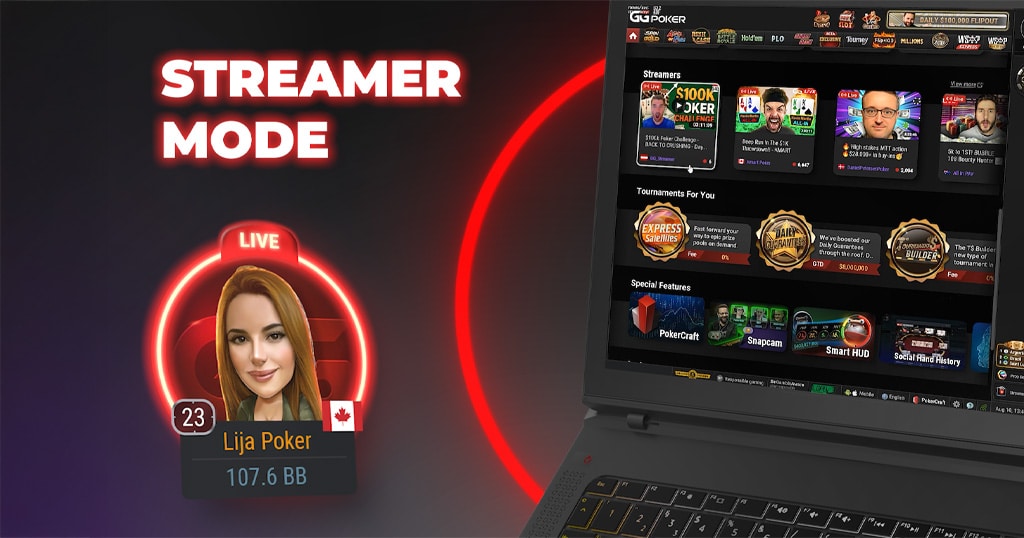Poker Blinds Explained: Small and Big Blind Essentials

Are you occasionally dabbling in poker and curious about the nuances that can elevate your game? Let’s delve into one of those nuances: poker blinds. While they might seem like just another aspect of the game, blinds play a pivotal role in shaping each round’s dynamics.
Blinds aren’t just mandatory bets; they’re strategic tools. So, shuffle up, grab a chair, and let’s break down the subtleties of poker blinds. Light reading, enlightening insights ahead!
The Fundamentals of Poker Blinds
You’re probably familiar with the basics: in a game of Texas Hold’em Poker, there are two types of blinds – small and big. But, just like the vast universe, there’s more to blinds than meets the eye. Consider blinds as the cosmic force that gets the poker galaxy spinning.
The player to the immediate left of the dealer places the small blind, usually half the minimum bet. The player next to them, on their left, places the big blind, typically the minimum bet. Sounds simple enough, right? Not so fast. Your role in the game, your strategies, and your potential success depend heavily on how well you handle your blinds.
For instance, did you ever notice how the structure of blinds impacts the pacing of the game? How increasing blinds create pressure, forcing players to make strategic decisions? Fascinating stuff, isn’t it?
Now, let’s delve a little deeper.

The Small Blind
Ah, the small blind, the seemingly insignificant half bet that’s often overlooked. Yet, mastering the small blind can become your secret weapon. You may be in the least favorable position, but who said underdogs can’t have their day?
In the small blind position, your choices are limited, but that doesn’t mean you’re powerless. For one, being the first to act post flop can be spun into an advantage. How, you ask? Well, think of it as having the first strike. You have the opportunity to set the tone and influence how others will act.
Of course, this doesn’t mean going all in just because you’re feeling lucky. A good poker player knows when to hold them and when to fold them. So, how do you decide? Well, your decision should be based on your hole cards, your understanding of the other players, and the overall state of the game.
For example, if you have high-value hole cards, it may be worth taking the risk and raising, pushing the game in your favor early on. On the other hand, if your hole cards aren’t worth writing home about, it might be wise to fold, taking the small loss and preserving your chip stack for better opportunities.
Owning the Big Blind: Harnessing Power from the Most Costly Position
As the player in the big blind position, you’ve put the most money on the table before even seeing your cards. You may feel like you’re in a tight spot, but think again. With great risk comes great power, and in poker, knowledge is power.
Firstly, you’re the last to act pre-flop. This gives you the chance to assess the betting landscape. Are your opponents aggressive, making big raises, or are they playing it cool? This information can guide your next move.
But wait, there’s more! Being in the big blind position, you have the opportunity to check and see the flop for “free.” And who doesn’t like free stuff?

Playing Smart: When to Defend Your Blinds
Defending your blinds means staying in the game even when you might not have the best starting hand. It’s a risky move, but sometimes risk is the name of the game.
When should you defend your blinds? Great question! If you have a moderately good hand and your opponents haven’t been overly aggressive, it might be worth seeing the flop. After all, even a blind squirrel finds a nut sometimes, right?
Defending your blinds can also be a strategic move to keep your opponents guessing. You don’t want to be known as the player who always folds their blinds, do you? Keeping them on their toes is all part of the game.
The Art of Stealing Blinds: High Risk, High Reward
Stealing blinds is an aggressive move, but when done right, it can give your chip stack a boost. To effectively steal blinds, you need to be observant, strategic, and just a little bit sneaky.
Are the players in the blind positions playing it safe, folding more often than not? If so, this could be your golden opportunity. By making a substantial raise, you could scare them into folding, and the blinds will be yours for the taking.
Remember, though, stealing blinds is not without risks. Be sure to weigh your options carefully, keeping your stack and the overall state of the game in mind.

Increasing Blinds: Applying Pressure and Pacing the Game
Ever wondered why blinds increase in tournaments? Well, it’s not just to make things more exciting (although, that’s certainly a bonus). Increasing blinds apply pressure, forcing players to make moves instead of playing it safe.
As blinds increase, the stakes get higher. Suddenly, preserving your chip stack becomes more difficult, and making strategic decisions becomes even more critical. This adds an interesting dynamic to the game, separating the amateurs from the pros.
Conclusion
Poker blinds add an interesting layer to the game. While they might seem simple, understanding the nuances of small and big blinds can give you an edge at the table.
Being in the small blind can help set the game’s pace, and the big blind can provide some strategic insights. As the game progresses and blinds increase, it’s essential to adjust your approach. Now equipped with a better understanding of blinds, approach your next game with a bit more insight. Remember, poker isn’t just about luck—it’s about making informed decisions, including how you handle your blinds. Enjoy the game and best of luck!
Whether you’re a fan of high-stakes cash games or the excitement of multi-table poker tournaments, GGPoker is the premier destination for poker enthusiasts. For those aiming to compete for a prestigious WSOP bracelet, push through the ranks for a WSOP Circuit ring, or simply hone their strategies in classic games or poker formats, GGPoker has something for everyone. The platform offers a seamless online poker experience, with innovative features like Smart HUD, PokerCraft, and integrated staking, designed to elevate your game. Whether you’re grinding your way up in daily cash games or competing for life-changing prizes in major online series, GGPoker provides the best environment to play, improve your poker skills, and succeed in the world of online poker. And if you are not sure where to start, you can always play free poker games and learn at the GGPoker School.



